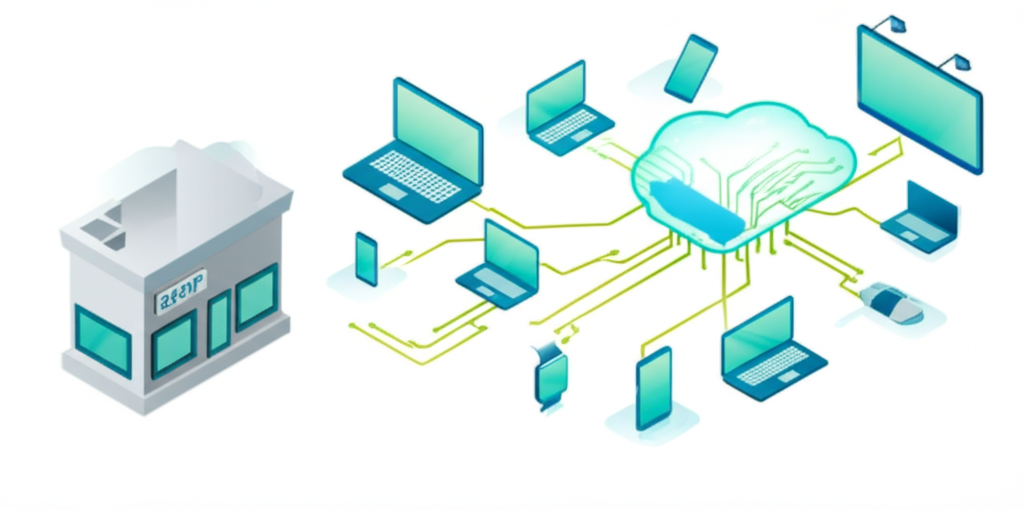Headless Commerce: Unlocking Explosive Growth for eCommerce Brands
Discover why eCommerce brands are switching to headless! Learn how it unlocks growth, scalability, and unique customer experiences.

Sabir Hussain
July 21, 2025 • 3:54 pm
Headless Commerce: Unlocking Explosive Growth for eCommerce Brands
In the ever-competitive world of online retail, eCommerce development has become a crucial differentiator. One of the most impactful strategies being adopted by leading brands is the shift to headless eCommerce. But what's driving this change, and why are businesses choosing to rebuild their online stores with this approach? This article explores the compelling reasons behind the move to headless eCommerce, focusing on how it empowers brands to build scalable online stores, craft unique shopping experiences, and gain a competitive advantage. We'll dive into the best headless eCommerce solutions, examine the latest modern eCommerce trends, and show you how to leverage eCommerce website development for maximum impact. Learn how to future-proof your business today!
The Challenges of Traditional eCommerce Platforms
Traditional eCommerce platforms, like Shopify (with limitations), Magento (Adobe Commerce), and WooCommerce, typically bundle the front-end (the storefront) and the back-end (the core functionalities) into a single, tightly coupled system. While this all-in-one approach simplifies initial setup, it often creates roadblocks for businesses looking to scale and innovate.
Some common limitations of traditional platforms include:
- Limited Customization: Tailoring the storefront to match your brand vision can be complex and restrictive.
- Performance Bottlenecks: Tightly coupled architectures can lead to slower loading times and sluggish performance, particularly during peak seasons.
- Inflexible Technology Stack: You're often locked into the platform's technology, hindering integration with other systems and the adoption of new technologies.
- Omnichannel Limitations: Delivering seamless experiences across multiple channels (web, mobile, apps, etc.) can be difficult.
Headless eCommerce: A Decoupled Solution
Headless eCommerce addresses these limitations by decoupling the front-end (the "head") from the back-end (the core commerce engine). The back-end handles product data, inventory, orders, and customer information, while the front-end is built separately using modern technologies and interacts with the back-end via APIs.
The Benefits of Embracing Headless eCommerce
- Unmatched Flexibility: Create highly customized storefronts that perfectly reflect your brand and cater to your target audience. This is at the core of any eCommerce website development strategy.
- Improved Performance and Scalability: Optimize the front-end for speed and scalability, ensuring a seamless shopping experience even during peak traffic. Vital to build scalable eCommerce websites.
- Technology Agility: Choose the best technologies for each layer of your system, allowing for faster innovation and easier integration with other systems.
- Seamless Omnichannel Experiences: Deliver consistent and engaging experiences across all touchpoints.
- Enhanced Customer Experiences: Create personalized shopping journeys that drive conversions and build brand loyalty.
Key Components of a Headless eCommerce Architecture
- Headless Commerce Platform: The back-end engine powering your store (e.g., commercetools, BigCommerce API, Shopify Plus API).
- Content Management System (CMS): Manages content such as product descriptions, blog posts, and marketing materials (e.g., Contentful, Sanity, Strapi).
- Front-End Framework: Builds the user interface using technologies like React, Vue.js, or Angular.
- API Layer: Enables communication between the front-end and back-end systems.
Real-World Examples of Headless eCommerce Success
Leading brands are already reaping the rewards of headless eCommerce:
- Burrow: Furniture retailer saw a significant increase in conversion rates after switching to headless.
- Patagonia: Outdoor apparel company delivers a consistent brand experience across all channels with headless.
- Skullcandy: Audio brand creates personalized shopping experiences that drive customer engagement.
Making the Leap: Is Headless Right for Your Brand?
The decision to migrate to headless eCommerce depends on your specific business needs and goals. If you're facing the limitations of a traditional platform and desire greater flexibility, scalability, and control, headless could be the answer. This will help you create scalable online stores.
Consider these factors:
- Project Complexity: Headless implementations require more technical expertise.
- Team Skills: You'll need a team proficient in front-end development and API integration. Partner with our Agency Partnerships for Headless Web Development.
- Budget: Headless projects can have higher initial costs.
We can help you explore headless eCommerce solutions. We also provide end-to-end eCommerce Development. Also, we can help you with sanity website development.
Don't hesitate to ask about our Website Development and Agency Partnerships.
Conclusion: Position Your Brand for eCommerce Success
Headless eCommerce is transforming the online retail landscape, empowering brands to create exceptional shopping experiences, achieve unmatched scalability, and gain a competitive edge. By embracing this innovative approach, you can unlock explosive growth and future-proof your eCommerce business. Don't wait, start exploring headless possibilities today! Consider the modern eCommerce trends to stay ahead.